Mountain bike purchasing advice: how to choose the right product
- The most important facts in brief
- Hardtail mountain bikes have suspension on the fork – full-suspension mountain bikes also have rear suspension.
- Depending on the area of use, mountain bikes are divided into all-mountain, cross-country, downhill, enduro and e-mountain bikes and more. The types each have specific features and components.
- Mountain bikes are only roadworthy with additional equipment.
Mountain bike: The special journey of a multi-talent
Mountain bikes are the perfect bike for many applications. In everyday life you are well equipped with them for unpaved or damaged roads. Cycling and even mountain tours are a joy with the right mountain bike model. If you’re looking for an adrenaline rush, you can board down difficult terrain at breakneck speed on downhill rides with the right mountain bike.
The mountain bike as we know it is not that old. It originated in California in the mid-1970s. A group of cyclists led by Gary Fisblockquotecher, Joe Breeze and Charles Kelly raced down the mountains around San Francisco on old cruiser models made by the Swinn company. Models of this type are very stable, so although they were designed for leisurely rolling along, they also cut a good figure on downhill rides. To improve the downhill experience, this group continuously modified their cruisers. Soon, components such as frames were designed specifically for this pastime. The mountain bike was born.
Today’s mountain bikes are highly specialized sports equipment for off-road cycling. They come in many different forms. Whether mountainous landscapes, unpaved roads or uneven terrain, for touring, racing or descending: the mountain bike is a true all-rounder in everyday life as well as in sporting activities.
Types of mountain bikes
Depending on your preferences, your comfort requirements and, above all, your intended use, you can choose between different types of mountain bikes.
The most common mountain bike categories are all-mountains for flat and uneven surfaces, cross-countrys for unpaved ground, enduros for descents and climbs, downhillers for descents, and e-mountain bikes.
These types are designed for their respective areas of use and thus differ from each other in aspects such as suspension or weight. The higher the suspension – indicated by the suspension travel – the better the bike compensates for impacts and bumps. Hardtail mountain bikes only have front suspension; full-suspension mountain bikes, or Fully for short, also have rear suspension.
All-mountain bikes
All-mountain bikes are generally fullys and are equally suitable for level ground as for a tour through the rugged Alps. If necessary, the rider can reduce or lock the suspension. With a suspension travel of between 120 and 160 millimeters, impacts and jolts are well absorbed. The medium weight of 10 to 14 kilograms allows the bikes good stability and maneuverability.
Cross-country mountain bikes
Cross-country mountain bikes are best suited for unpaved trails. Manufacturers design them mainly for recreational use; in some cases, they also produce variants for competitive racing. The former weigh around 12 kilograms; the latter are considerably lighter at less than 10 kilograms. Cross-country bikes are largely hardtails; with their low suspension travel of 80 to 120 millimeters, they are rather unsuitable for wild terrain.
Enduro
Enduro refers not only to the bike, but also to the mountain biking discipline for which the bikes are designed, namely downhill races for the best time. The uphill ride, that is, going up the mountain, is irrelevant to the mountain biking discipline, but of course enduro bikes must be able to comfortably tackle climbs.
To master this discipline, good suspension that compensates for the rough ground is very important. Enduro mountain bikes therefore have front and rear suspension and a large suspension travel of 150 to 180 millimeters. The rider’s sitting position is even more upright due to the cranked handlebars. With their high weight of 12 to 16 kilograms, enduros have increased stability for downhill rides, but are light enough to master uphill rides.
Downhill mountain bikes
Downhill mountain bikes, so-called downhillers, are primarily suitable for fast descents on difficult surfaces. In contrast to enduro bikes, mountain bikers cannot climb mountains with this MTB in principle, as their weight of up to 18 kilograms requires the rider to generally exert too much force. The high weight results from the stable construction, which is necessary for rapid descents. With very high suspension travel of 180 to 250 millimeters, the bike also absorbs strong impacts. While protective clothing is important in any application to prevent injuries, you should pay particular attention to downhill rides. Downhill riders generally wear full-face helmets, cycling gloves, knee pads and projector jackets.
E-mountain bikes
In recent years, e-mountain bikes have become increasingly popular among manufacturers and bikers. With the processed electric motor, the rider can master difficult routes such as mountains, steep slopes or descents, which he otherwise could not ride. Beginners ride with e-mountain bikes routes for which a mountain biker may train for a long time. From hardtails to fullys, cross-country or downhillers: e-mountain bikes are available in all categories. The mid-motor is located at the bottom bracket. The battery power is generally between 400 and 650 watt hours. The maximum speed of an E-MTB is generally 25 kilometers per hour. If you plan a longer tour, for example, through the Alps, and plan enough charging station, this power is enough for a ride of several days.
Other types of mountain bikes
Apart from these main categories, there are still a large number of specialty types. Fatbikes are distinguished from other mountain bikes by their oversized tires, which allow them to ride smoothly on surfaces like sand and snow. Racebikes are hardtails used in marathon competitions and cross-country races. For the fun sport of dirt jumping, in which the cyclist jumps over mounds and performs tricks in the air, he needs a small, stable and lightweight bike. Manufacturers have created the perfect solution for this with the dirt jump bike. The trail bike is very versatile and is used, for example, for ascents and descents and particularly demanding routes. But here, too, manufacturers place different emphases on their bikes. While they are suitable for everything, some models are better suited for the downhill discipline, for example, while other models are designed more for trails.
Trekking bike
The trekking bike or touring bike has evolved alongside the mountain bike since the 1980s. Originally, cyclists converted mountain bikes to be roadworthy for cycling trips in mountains and flatlands. Today, trekking bike refers more to a high-quality everyday or recreational bike with 28-inch wheels. Bicycles designed specifically for bicycle travel are the so-called touring bikes.
Components and their special features
The components of each type of mountain bike, or rather their specific designs, stand out from other types of bicycles in the following areas: Frame, wheel, suspension, gears, brakes, saddle and pedals. While individual components are found in the form in other types of bicycles, the combination of these special features is characteristic of MTBs.
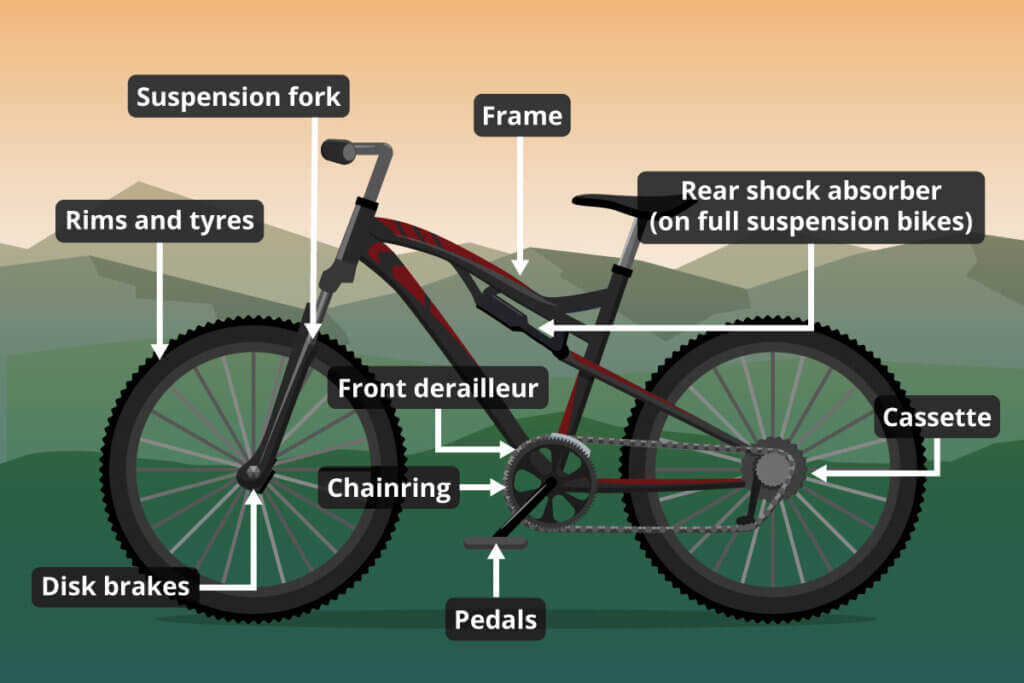
Frame
The frame is the basic structure of every bicycle. It significantly influences the riding characteristics and the possibilities of use. An MTB frame must on the one hand be strongly loadable and on the other hand guarantee driving safety. Stability, durability and weight of the bike depend on it For this purpose, manufacturers mainly use aluminum and carbon, sometimes also steel or titanium frames. The choice of the right material depends on the mountain biker’s preferences, area of use and budget.
Titanium frames are as light as aluminum and as strong as steel. Since the raw material is the most expensive of all the materials and its processing is very complex, titanium frames are poorly suited for mass production. Steel has the lowest price and the highest weight. Originally the most widely used material, it has been largely replaced by aluminum. Aluminum frames have low weight and are also inexpensive. Carbon is the lightest material and the most expensive after titanium. Because it does not twist much, it is the perfect material for efficient use of power – the rider’s applied force is transmitted without loss. For professional mountain bikers, this is a very important property in addition to weight. Since carbon frames are sensitive to falls, overturns or impacts, they are not as suitable for everyday use as aluminum frames.
Wheel
For the right mountain bike, the wheel size is also significant. The original standard size of 26-inch wheels is now supplemented by 27.5- or 29-inch wheels. 26-inch wheels shine with their low weight, maneuverability and fast acceleration. On the other hand, they are unsteady in running and have low traction. 29-inch wheels offer greater riding safety, better traction and comfort when riding over bumps. In return, they weigh the most, are less agile to turn and are more sluggish to accelerate. 27.5 inch wheels represent a middle ground. They are agile and accelerate well. Traction and weight are also in the middle range.
| Features | 26-inch wheel | 27.5-inch wheel | 29-inch wheel |
| Weight | Light | Medium | Heavy |
| Maneuverability | Very maneuverable | maneuverable | Sluggish |
| Acceleration | Very good | Good | Heavy |
| Smoothness | Unsteady | Quiet | Very quiet |
| Traction | Poor | Good | Very good |
| Rollover | Poor | Good | Very good |
Choose 29-inch wheels if you want to specialize in cross-country, touring or marathon. We also recommend 29-inch wheels for people taller than 170 centimeters and discourage them for shorter people. 27.5-inch is the measurement for downhill-oriented bikes like all-mountain or enduro. If you want your bike to be light and maneuverable or you yourself are short, a 26-inch wheel is the best solution.
Suspension
The handlebars and front wheel are attached to the suspension fork. They are important for steering and balance. Two suspension systems are common on mountain bikes: steel springs and springs with air pressure. The latter are a lot lighter than steel springs. In addition, springs with air pressure can be adjusted very finely; however, they only react to small impacts to a limited extent. In contrast, steel springs are particularly sensitive to small impacts, but are difficult to adjust.
To assess the quality and “feel” of the suspension, consumers can use the so-called spring travel of the MTB suspension as a guide. The spring travel indicates how well the suspension fork absorbs shocks and impacts. The greater it is, the better the MTB can absorb even heavy shocks. By precisely adjusting the air and rebound pressure, the mountain biker tunes the suspension directly to the body weight and the surface he wants to ride on. Thus, he remains as stable as possible in any unevenness. The shape of the frame and the suspension fork together determine the geometry of the entire MTB and thus also the riding characteristics.
Which suspension makes sense depends on the intended use. The better the suspension, the more stable the bike rides even on uneven ground. In general, the suspension is better with a higher suspension travel. For less demanding terrain, a suspension travel of 75 millimeters is sufficient; downhillers often have more than 200 millimeters of suspension travel, so that the bike remains stable even on the most rapid descents.
How does the suspension of hardtails and fullys differ?
While a hardtail bike is only suspended at the front wheel, the “Fully” is also suspended at the rear. Hardtails are lighter, simpler to maintain and more efficient at distributing the rider’s energy. Hardtails thus master easy to medium terrain very comfortably. Challenging terrain, jumps and potholes, on the other hand, the dual suspension of a “Fully” far better absorbs Due to the better grip on the rear wheel, the driver not only reaches a higher speed, his control over his bike is much better. For demanding routes a Fully is thus ideal. In return, they are fullys heavier and maintenance is a lot more complicated.
Gear shifting
Mountain bike riders also attach great importance to the right gear shift, because it adapts the gear ratio of the wheels to the terrain. For straight stretches, a high gear ratio makes sense in order to achieve high speeds at a low cadence. For uphill climbs, cyclists rely on a low gear ratio and a high cadence to make good progress. For mountain bikes, with which the rider rides on many different terrains, a high number of adjustable gears is essential. A derailleur with more than 30 gears is not uncommon, especially on premium models.
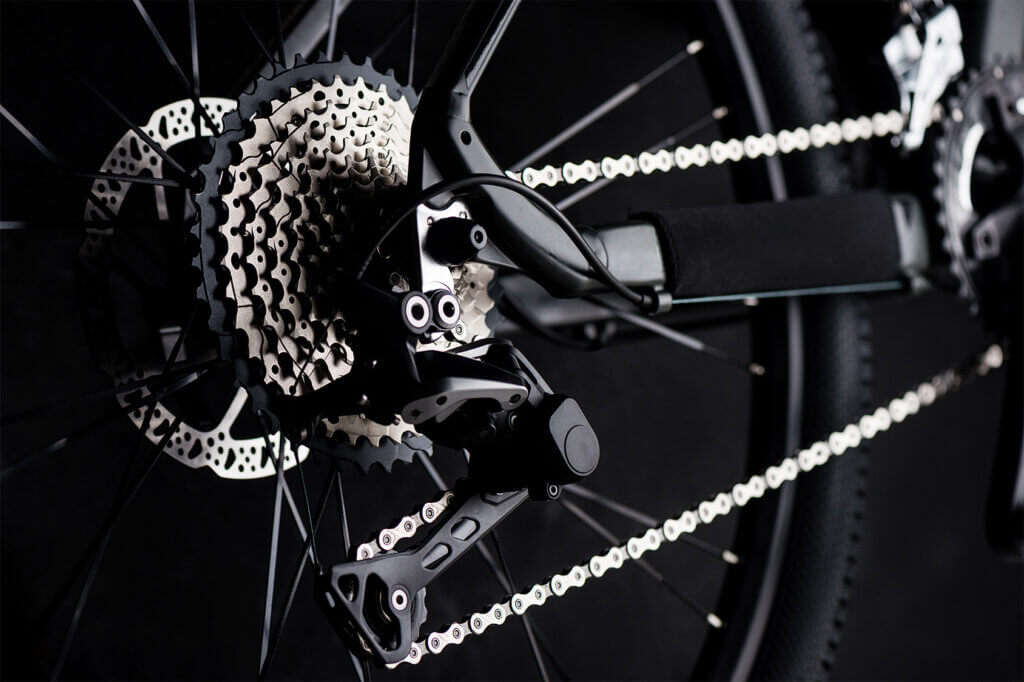
This means that the driver always has the right gear for the surface. Going downhill? If you still want to pedal, a high gear is ideal. Do you want to ride up a hill? That works best with the lowest gears. You will feel the difference strongly with a high gear.
With derailleur gears, there are single, double or triple gears. This specification refers to the number of chainrings on the crank. Triple gears have the widest range, which is why they are very popular with touring bikers. Mountain bikers in cross-country and enduro racing like to use single gears because they are the lightest and have the least wear. In most areas, dual gears are the most popular because they are a good compromise.
Brake
No mountain bike can do without functioning and powerful brakes. Especially when riding downhill, the demand on the brakes is enormous. Manufacturers use either the rim brake or the disc brake.
Rim brake
In the rim brake, the brake pads are located on the side of the wheel rim and press on it during braking. The rim brake has a low weight and a low price. On the other hand, braking performance is reduced in wet conditions. With frequent cycling, not only the brake shoes wear out; in the long run, rim brakes also wear out the rims themselves. Therefore, pay attention to the wear markings on the rims to prevent accidents.
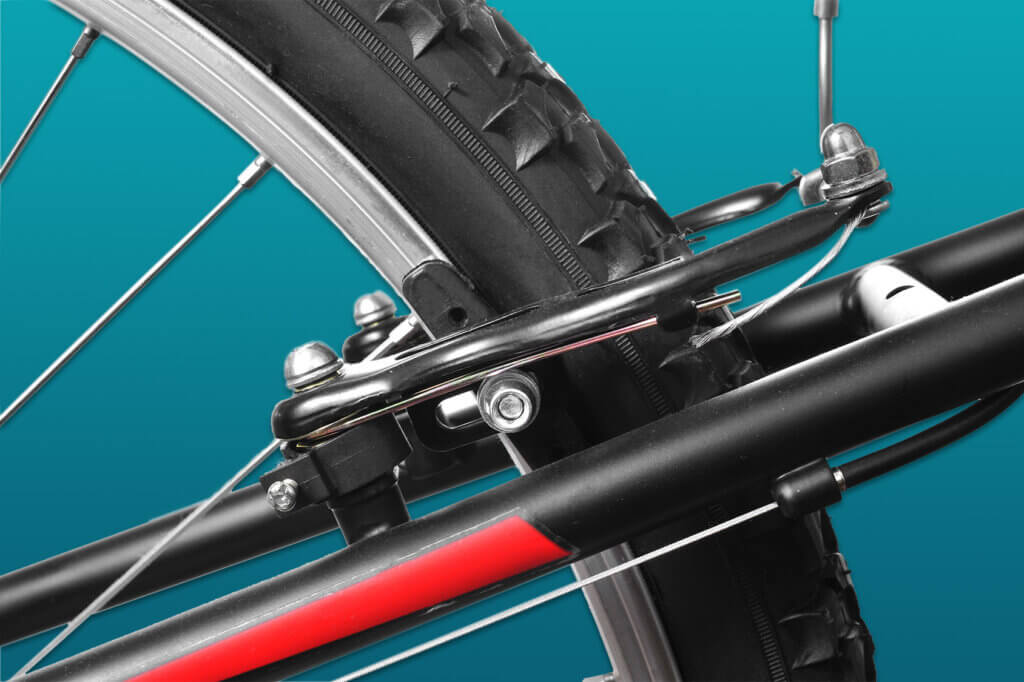
Disc brake
This is a brake disc that is placed directly on the wheel hub. When braking, the brake pads press on the disc from both sides. Compared to the rim brake, a disc brake is not only heavier, but also more expensive. Wet conditions, however, do not affect braking performance. In addition, the braking effect can be more finely dosed than with the rim brake.
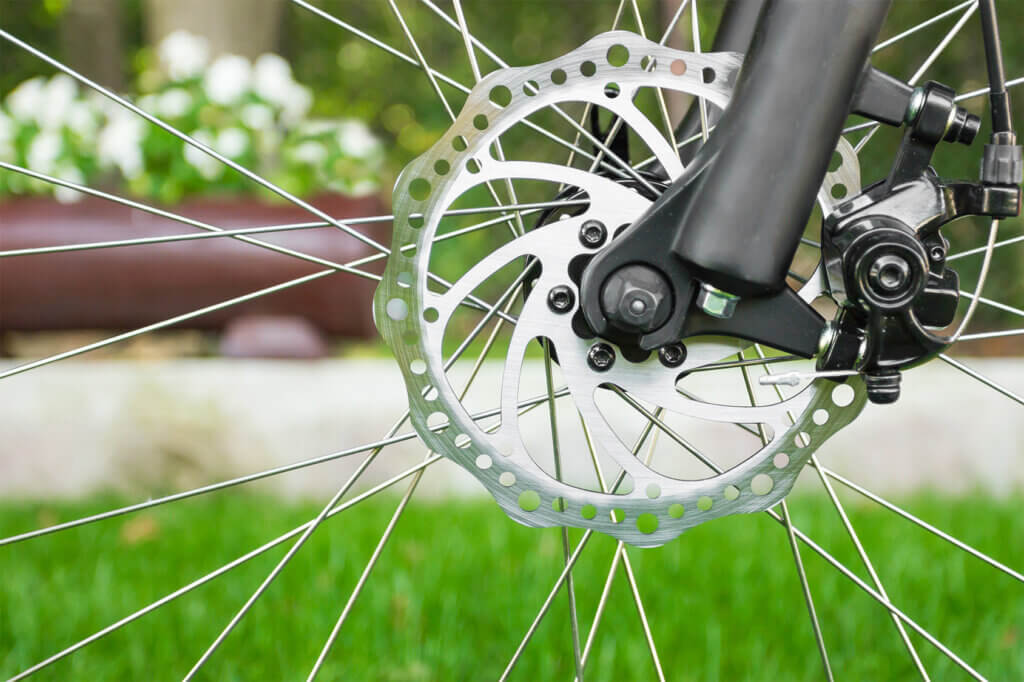
Most manufacturers now install hydraulic disc brakes instead of rim brakes or mechanical disc brakes with Bowden cable. These do not lose their braking power in the rain, but they do if the pads overheat. So good brake pads, in addition to braking power, are crucial for good and consistent braking performance. Choose metallic brake pads for downhill-heavy MTBs and organic brake pads for the other areas of use.
Saddle
The saddle on mountain bikes must also be particularly durable to withstand the high stresses of off-road riding. Bicycle saddles are available, for example, in plastic, rubber, leather or carbon, and in many different forms. Experienced mountain bikers attach great importance to lightweight bikes: a lightweight saddle made of carbon is their choice. A (synthetic) leather saddle is robust and durable, but quite heavy. For beginners, however, a bike that is as light as possible is only relevant to a limited extent; leather is therefore very suitable for them.
The hardness of the padding should correspond to the area of use: Soft saddles are comfortable at the beginning, but during longer rides the pelvis sinks into the padding, which leads to pressure pain. In that case, the padding may be harder.
Also pay attention to the width of the saddle: if it fits, the pressure is optimally distributed. To find the optimal saddle width, you should measure your sit bone distance. Depending on your sitting position, then add up to four centimeters. For a maximally stretched seating position, such as in triathlon, the seat bone distance is sufficient; for a fully upright seating position, add four centimeters. As an MTB rider, however, you usually adopt a moderate riding position; for this, you should add two centimeters to the sit-bone distance.
Pedals
When it comes to pedals, MTB riders have a choice: platform pedals (flat pedals) or clipless pedals. While the shoe lies unsecured on the pedal surface with platform pedals, it is firmly attached to the pedal with clipless pedals. This not only gives the rider more momentum and control, it also prevents him from slipping off the pedal. Special cycling shoes are equipped with cleats that click into the pedal. How tight the binding is, the user adjusts individually. A special form of clipless pedals has the mechanism on one side and a normal tread on the other. Thus, the user decides for himself whether and when he wants to click in. Since you may have to turn the pedals properly first to put the foot on the click surface, the click-in may take a little longer.
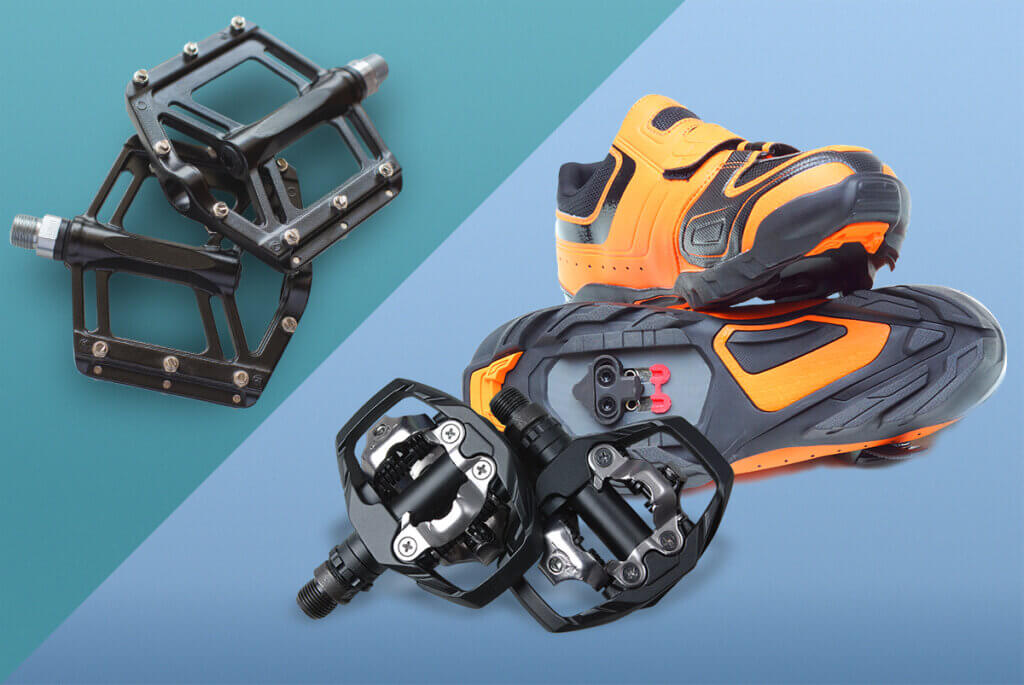
Design
When it comes to color and design, you have a choice: muted or colorful, with or without a pattern. Especially for women’s mountain bikes, the choice is very large. The MTB manufacturer Cube advertises with individual and colorful designs. If you do not find the right design, then simply design it yourself. You can also have this done professionally according to your ideasYour imagination knows no bounds.
What matters when buying a mountain bike
Finding the perfect mountain bike depends on a large number of factors: The area of use, the type of components, their properties, the material used and, of course, the price. All of these factors interact with each other. For example, a higher price means more powerful components and more expensive materials. However, a premium mountain bike for every conceivable area of use and with the highest quality components is not necessary for many areas. Especially beginners will be satisfied with a cheaper alternative. What you absolutely have to pay attention to is the right fit; only then can you really use your bike.
What are the two most important factors when choosing a mountain bike?
To find the right mountain bike, you need to be aware of two things: Your body measurements and your intended area of use. Suspension, frame and wheel size are largely determined by these factors. Without this information, you are likely to make a bad purchase. You determine the right fit with the help of your stride length. Multiply your stride length by the factor 0.574 for the appropriate MTB frame size in centimeters and by 0.226 for the specification in inches. A stride length of 70 centimeters results in a frame size of approximately 40 centimeters or 16 inches. A stride length of 85 centimeters will give you 49 centimeters or 19 inches. Tables that determine frame sizes based on height are not recommended, as the ratio of leg length to torso can vary greatly.
Pricing of mountain bikes
The price of a mountain bike depends largely on the components and their materials. Which materials are installed, in turn, depends on the purpose for which the MTB is designed. For example, the construction and characteristics of the components of two bikes with opposite requirements can not be identical. The more options a component has, the more expensive it is. A 33-speed derailleur costs more than a 21-speed derailleur. In terms of materials, the more carbon components an MTB has, the more expensive it is.
Mountain bikes for beginners
If you want to get into the mountain bike world, you don’t have to buy the most expensive model right away. Especially if you want to try it out first, an entry-level model with an aluminum frame makes more sense than a premium carbon mountain bike. While the mountain bike type generally depends on the area of use, we recommend a hardtail MTB for beginners. On the one hand, hardtails are less expensive than fullys, and on the other hand, they are easier to handle. In addition, a beginner learns important riding techniques such as loading and unloading the bike or line riding more easily without the double-sided suspension.
Entry-level hardtails generally cost up to 1,000 euros. A mountain bike for less than 1,000 euros means simple components; however, you still get a suspension fork with 100 millimeters of travel, sturdy aluminum frames and disc brakes. With the best-known brands, you’ll pay at least 600 euros for a solid hardtail mountain bike, and often even less with less established brands. However, if you want to ride long tours or action-packed trails, you should rather invest around 1,000 euros. For a full MTB of equal quality, you will have to spend 1,500 euros, as these models with double suspension are generally more expensive than the hardtails with single suspension. However, keep in mind that for 1,500 euros you also get a hardtail model that is particularly suitable for beginners with the higher quality components. In this respect, especially beginners should weigh carefully between hardtail and fully.
Mid-range mountain bikes
For more demanding tours, races or even trail descents, you need a mid-range hardtail MTB for around 1,500 euros that has high-quality components. Cross-country hardtails offer a suspension travel of 80 to 100 millimeters, trail hardtails shine with 100 to 140 millimeters of suspension travel. For 2,000 euros you can already find race-ready hardtails with carbon frames. For a fully in the middle price range, 2,500 euros is the average price. With its good and adaptable chassis as well as mechanical components, brakes and drive in solid quality, a mid-range full is more worthwhile than the inexpensive version. Whether a hardtail or a fully is the better choice thus depends heavily on the cyclist’s preferences and area of use.
Mountain bikes in the premium price range
With premium mountain bikes, there are no limits to the price. Premium hardtails are still the cheapest in the category, however, with a minimum price of 2,500 euros. Fox or Rock Shock provide high-quality suspension forks with a travel of 100 to 140 millimeters here. Carbon frames, partly also carbon attachments, are common. Very high-quality gears from Shimano or SRAM, the two market leaders in this area, quickly drive the purchase price even higher. Recommended premium models are, for example, Shimano XT and XTR as well as SRAM X01 and XX1. The price of a premium full starts at 3,500 to 4,000 euros. The equipment differs in detail by the area of use for which the bike was designed.
Are predecessor models an alternative?
If you have a limited budget but high requirements, there is another option: predecessor models. These are a lot cheaper than the current models, but still equipped with high quality. Provided you do not attach importance to the latest technology, you can thus save some money. Mountain bikes are not as quickly outdated as smartphones, for example. Generally, the latest in mountain bike technology is more suitable for professionals than for beginners and hobby mountain bikers. With well-known manufacturers, you are on the safe side.
Traffic-safe mountain bikes
Mountain bikes are generally not roadworthy. However, you can easily change that. For this, a functioning lighting, a bell in the form of a “bright-sounding bell” and two independent brakes are necessary.
What equipment is necessary for roadworthy mountain bikes?
According to paragraph 67 of the Road Traffic Licensing Regulations (StVZO), you need a white headlight at the front, as well as a red tail people at the end of the bike. These are powered either by an alternator, i.e. a dynamo, or a battery. You will also need to attach several reflectors: one white one at the front, at least one red one at the rear, at least two yellow ones on the spokes of each wheel and on both narrow sides of the pedals. Instead of the yellow spoke reflectors, you can also attach white reflective material to the spokes or tires. All of these items must be operational at all times while firmly attached to the wheel.
Mudguards and are not required by law, but are useful in everyday use to keep your clothes clean. Luggage racks are also optional. On them you can attach a bicycle basket or panniers and thus increase the transport capacity of their mountain bike – a great relief if you regularly ride your bike to work or shopping.
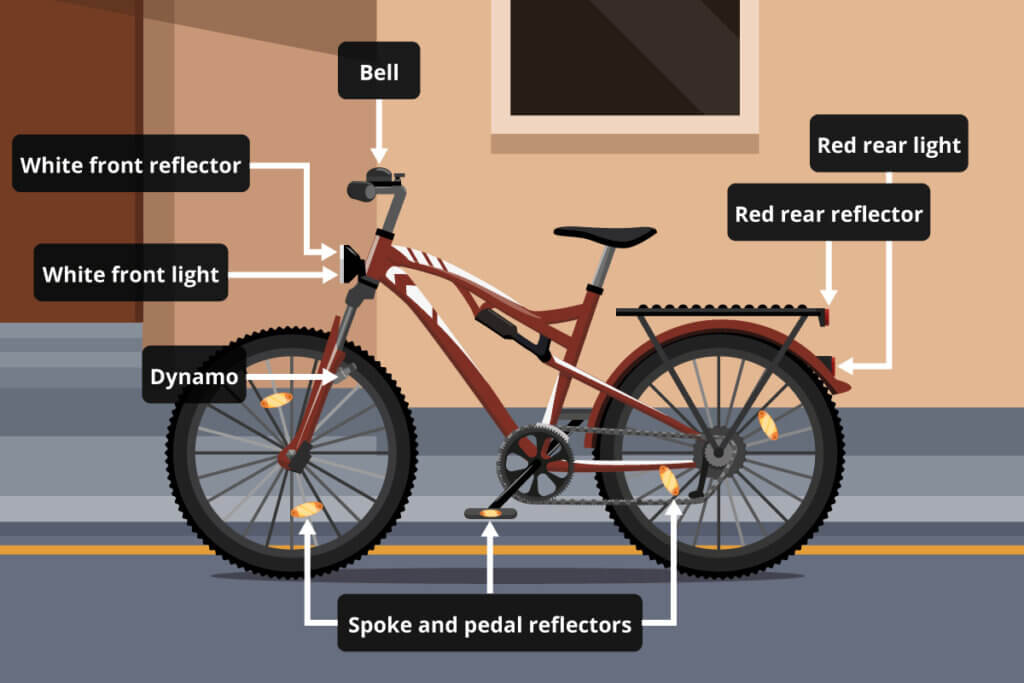

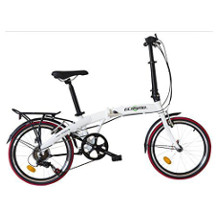
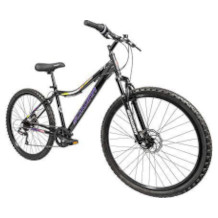
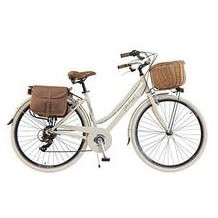
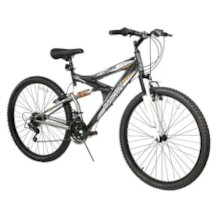
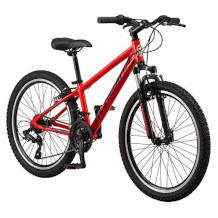
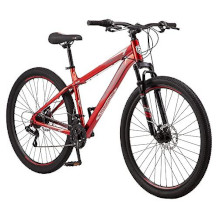
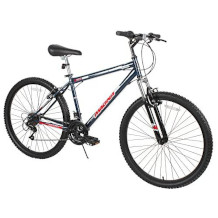
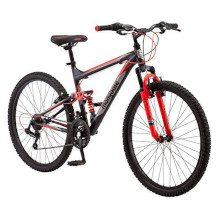

 no reviews
no reviews